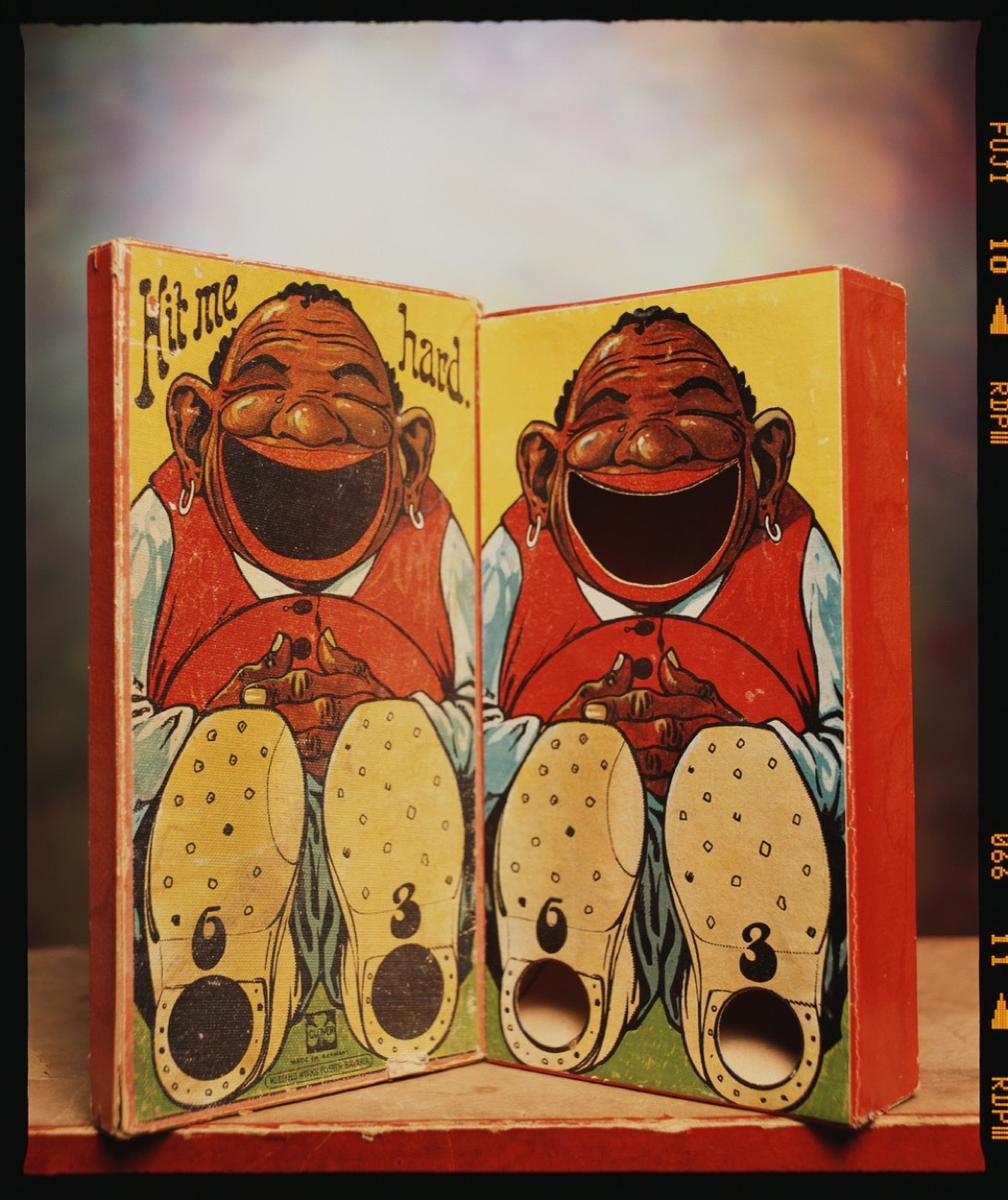Some of your early works discuss human secretion and religion. Can you talk about the influences that make you engage with this practice in your career and what concepts are present using human secretion as an aesthetic tool?
I didn’t discuss it, I did it. I prefer to make art then talk about it. My biggest influence came from Marcel Duchamp who taught me, and everyone else, that anything, including a photograph, could be a work of art. That’s why I don’t like for people to call me a photographer. I think in terms of art, not photography. I’ve always thought outside the box. In 1961, Piero Manzoni made 90 small cans and called it Artist Shit. No one’s ever dared to open one of those cans to see if it’s real shit or bullshit. You can make art out of anything. One day an artist is going to make art out of air but you’re going to have to look real hard to see it.
Religion is a recurrent topic in your work; what is your relationship with it? Do you consider devotional objects as engaging with a compelling aesthetic dimension? How do you consider this kind of object in your practice and outside of your practice?
I’m a good Catholic boy. I made my Holy Communion at eight and my Confirmation at twelve when I became a “soldier of God”. That’s what the nun told us. Before the 17th century, dating back to the Byzantine, Middle Ages and Renaissance, the only art that mattered was religious art. I belong to that tradition of the Christian aesthetic. I’m also a collector of Renaissance and Medieval furniture and works of art and everything, including the furniture, is ecclesiastic.
You demonstrate a remarkable ability to show what most of the world tries to hide or keep secret. Where is it coming from?
 https://www.nastymagazine.com/wp-content/uploads/2023/11/Homewreckers-003.jpg
1598
1600
Editor Nasty
https://www.nastymagazine.com/wp-content/uploads/2015/02/new-logo-basker-WHITE4.png
Editor Nasty2023-11-29 13:38:252023-11-29 13:40:58Anna Uddenberg / Home Wreckers
https://www.nastymagazine.com/wp-content/uploads/2023/11/Homewreckers-003.jpg
1598
1600
Editor Nasty
https://www.nastymagazine.com/wp-content/uploads/2015/02/new-logo-basker-WHITE4.png
Editor Nasty2023-11-29 13:38:252023-11-29 13:40:58Anna Uddenberg / Home Wreckers

















